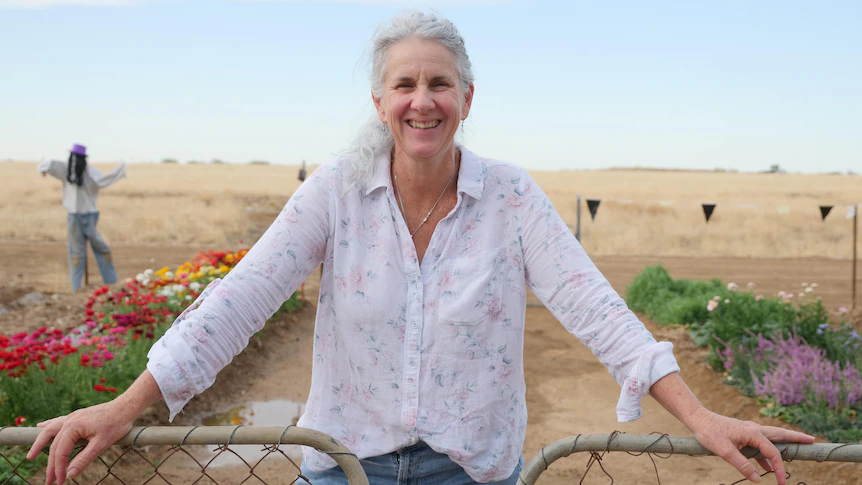By Grace Nakamura
Copyright abc

Growing flowers is an act of joy for outback resident Suzanne Stanton.
“Usually, people have business plans, but my plan is just joy — that’s my payment,” she said.
A career change led the avid gardener to open a micro flower farm recently behind her house at Ilfracombe, more than 1,000 kilometres west of Brisbane, where anyone can pick their own bouquet for an optional donation.
With blooming beds of sunflowers, dahlias, and carnations, the not-for-profit flower farm is in stark contrast to the endless plain of straw-coloured Mitchell grass that surrounds it.
“One young girl came, and she was literally jumping for joy in between the beds,” Ms Stanton laughed.
Honouring a family tradition
According to Ms Stanton, outback women have taken comfort in their flower gardens for generations, as proof that even the fragile can survive in the harshest of climates.
Growing up on a sheep station near Longreach in western Queensland, she has endured many a drought.
Her grandmother would plant annuals, including petunias and marigolds, every year — no matter the weather.
“You go to most properties and there’s a garden like a little oasis in the middle of it all,” Ms Stanton said.
“Sometimes with little to no water, but they keep pulling it off.”
The 56-year-old quit her job in the care sector a few months ago to focus on creating the flower farm, where she now works seven days a week.
“It came about for my mental health,” Ms Stanton said.
“I wanted to do something just for me but also to bring joy to the community.”
Her husband, Wes Irwin, is supportive — even helping to collect sheep manure on his days off work.
“It’s very rewarding and her creativity comes to the fore,” Mr Irwin said.
“It’s a good little community — if we can add to it, that would be great.”
‘Only grow what grows’
Even the hardiest outback residents struggle with the heat over summer, and flowers are no different.
Ms Stanton said keeping the garden alive as temperatures rose would be a “totally different cup of tea”.
“We’ll see what happens when we get to those 45 to 48 horrible degree days,” she said.
Longreach gardener Elizabeth “Thumper” Clark wrote a book based on her experience of keeping plants and flowers alive in the outback.
The book’s title — Only grow what grows — is also her biggest piece of advice for bush gardeners.
“It came from an old station hand who couldn’t read or write, but she had a lovely garden … I asked her one day why her garden was so good and mine wasn’t, and she looked at me pityingly and said ‘Love, only grow what grows,'” Ms Clark said.
Tending to her “big rambling” garden was a way for Ms Clark to take her mind off the challenges of running a sheep and cattle station during the drought.
“We had run out of water, and we were carting it in, and I was determined to keep a few things alive,” she said.
Ms Clark joked that on a bad day, gardeners could dig a hole and “bury a politician or someone you don’t like in it”.
Outback gardening advice
Deeper into the outback — in areas that were smashed by flooding earlier this year — wildflowers are blooming in swathes of yellow and purple.
Ms Clark said the country always bounced back from natural disasters like floods and drought.
Her advice to amateur gardeners is to learn about the soil — and even get it tested — before planting.
“It does save a lot of heartbreak even though it’s a pain in the neck,” she said.
“If you’re on black soil, it does get very hard but it can work if you add a lot of gypsum, a bit of sweat, and a lot of mulch.”
Embracing her new adventure, Ms Stanton is learning to keep her garden alive in the outback, as many women on properties have done before her.
“Soil, mulch, watching the water,” she said.
“Keep the roots cool through summer and grow the right thing in the right place.”



